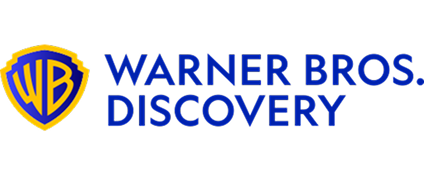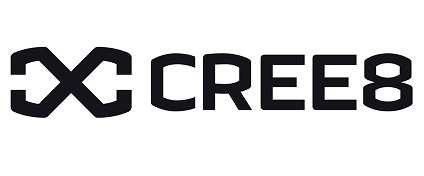How to Get an Agent: A Guide to Top Actor Talent Agencies (2025)

Introduction
The career trajectory of a high-potential actor is often defined by a single, critical decision: securing representation from the right talent agency.
For senior professionals managing a career—whether as a private manager, financier, or established performer—the process of understanding How to Get an Agent: A Guide to Top Actor Talent Agencies (2025) is less about luck and more about strategic market mapping.
The global entertainment supply chain, currently valued in the trillions of dollars, is segmented by gatekeepers like Creative Artists Agency (CAA), William Morris Endeavor (WME), United Talent Agency (UTA), and Paradigm.
Approaching these entities without a strategic blueprint is a low-probability gamble. This guide shifts the focus from “sending a query” to “executing a partnership pitch.”
The goal is to move from being an unsolicited submission to a high-value prospect whose market value has been validated by verifiable market intelligence.
This is a strategic guide designed for the executive mindset, treating the actor’s career as a business pipeline that requires due diligence, competitive analysis, and a precise go-to-market strategy.
Table of content
- The Strategic Pre-Requisites for Top Talent Agency Representation
- Research and Targeting: The Executive’s Approach to Finding an Agent
- The Submission Protocol: How to Get an Agent’s Attention (2025)
- How Vitrina Transforms the Talent Agency Search from a Blind Query to a Strategic Pipeline
- Conclusion: Mastering the Strategy to Get an Agent
- Frequently Asked Questions
Key Takeaways
| Core Challenge | Strategic Solution | Vitrina’s Role |
| Talent agency submission is a high-volume, low-conversion process based on blind outreach. | Shift from mass submissions to targeted, data-validated outreach to agents with verifiable success in the actor’s specific vertical. | Provides the market intelligence to map agent-client relationships, track agency deals in real-time, and vet an agent’s true specialization. |
The Strategic Pre-Requisites for Top Talent Agency Representation
Before approaching a Top Actor Talent Agency, the actor’s profile must be treated as a product ready for market. An agent at an elite firm is an investor of their time and network; they seek proof of concept and a quantifiable return on investment. The pre-requisite checklist must move beyond basic materials and focus on evidence of market readiness.
The Actor’s Toolkit: Beyond Headshots and Reels
The submission materials—headshots, resume, and demo reel—are the primary sales collateral. However, their value is only as strong as the work they represent. Top agencies are not evaluating potential; they are evaluating current viability.
- Professional Headshots: Must be current, high-quality, and clearly define the actor’s brand or ‘type’ (e.g., “leading man,” “quirky neighbor,” “tech executive”). A lack of branding clarity forces the agent to do the work, which is a structural inefficiency they will avoid.
- The Resume (CV): This must emphasize professional, credited work. According to industry experts, one key strategic point is demonstrating a track record of collaboration with reputable production entities or directors, even in smaller roles. This signals that the actor has successfully navigated a professional set and the complexities of the entertainment supply chain.
- The Demo Reel: The reel is the ultimate validation tool. For a major agency like CAA or WME to engage, the reel must showcase variety, production value, and undeniable acting ability. It is no longer enough to use self-taped scenes; the footage must look and feel like a professional production. Agents primarily submit clients via services like Breakdown Services, and a poor reel is a liability in that ecosystem.
Union Status (SAG-AFTRA) and Market Positioning
For the top-tier U.S. agencies, SAG-AFTRA membership is a practical non-negotiable. While agents can represent non-union actors, the union card significantly expands the pool of available auditions and job types. This is purely a function of business efficiency: a union member is simply more marketable and immediately accessible to a wider range of production opportunities.
The strategic actor must also address their market positioning—the specific genre, territory, or skill set they occupy. Agents specialize. A theatrical agent is distinct from a commercial agent, and a New York agent’s network is fundamentally different from a Los Angeles or London agent’s network.
Submitting to an agency or, more critically, to an individual agent who does not represent your type is the fastest way to signal a strategic misalignment and an underdeveloped understanding of the industry.
This level of market knowledge requires visibility into agent activity that often resides within private industry databases. The inability to vet the true specialization of an agent is a critical problem for those attempting to enter the industry.
Research and Targeting: The Executive’s Approach to Finding an Agent
The core of a successful agency pitch lies in research, moving beyond the public-facing roster to understand the private business strategy of an individual agent. Executives in the M&E supply chain understand that successful partnerships are based on data parity and alignment.
Mapping the Ecosystem: Agent vs. Manager
A common mistake for aspiring talent is confusing the talent agent with the personal manager. A talent agent is legally mandated to procure employment and negotiate contracts, typically earning 10% commission.
The agent is the sales force, connecting the actor to casting directors. A personal manager, by contrast, focuses on the actor’s long-term career strategy, development, and business advice, generally earning a higher commission (often 15-20%). While agents are state-licensed, managers operate without this regulation.
Understanding this distinction is key:
- If you need a sales pitch and negotiation expert: Seek an agent.
- If you need high-level career development, guidance, and a strategic sounding board: Seek a manager.
In many cases, an actor seeks a manager first, who then acts as the strategic conduit to introduce them to a vetted talent agent.
The “Fit” Filter: Aligning Your Brand with an Agency’s Roster
Top-tier agencies maintain specialized departments (e.g., TV Literary, Theatrical, Commercials, Voiceover) and are highly selective. The “Fit” Filter is the process of comparing your profile to the agent’s current roster to identify a clear gap or complement.
- Avoid Redundancy: Never target an agent who already represents five established actors in your exact niche, type, and age range. Your pitch must offer a unique value proposition that does not cannibalize the agent’s existing business.
- Identify the “Up-and-Comers”: A strategic approach often involves targeting a rising agent who is actively building their client list, rather than a veteran agent whose list is already closed or full of established stars.
- Use Data to Vet Specialization: Agencies like ICM Partners (now CAA) and WME are massive, covering film, TV, music, and digital. The strategic advantage comes from knowing which specific agent within the massive organization handles which specific deals. This internal knowledge is generally difficult to acquire and represents a significant pain point in the broader entertainment supply chain.
Leveraging Market Intelligence for Top Actor Talent Agencies
The most effective submissions do not rely on hope; they rely on a documented professional connection or referral. Professional referrals from established casting directors, producers, or showrunners are the single most effective way to secure a meeting at a Top Actor Talent Agency.
For those without direct access, the strategic alternative is to demonstrate competence and momentum. This includes:
- Securing High-Profile Auditions: Self-submitting to smaller, highly-regarded projects to build credits that an agent will recognize.
- Creating Visible Work: Generating and releasing a high-quality short film or web series that demonstrably showcases talent and versatility.
- Interning and Volunteering: Working as a reader at a casting office or interning at an agency can provide invaluable, first-hand insight into the submission process and create organic connections that lead to a referral.
This process of gathering market data—on agencies, production companies, and projects—is fundamentally inefficient, often relying on fragmented databases and manual searches, which is one of the core pain points in entertainment supply chain.
The Submission Protocol: How to Get an Agent’s Attention (2025)
Once the target list is finalized, the submission itself must be executed with the precision of a formal business query. A top agent’s assistant is tasked with filtering out anything that does not immediately signal professionalism and market readiness.
Crafting the Executive-Level Cover Letter (The “Referral” Subject Line)
The cover letter, often sent via email in 2025, is the actor’s executive summary. It must be brief, direct, and focused on market value.
- Subject Line: The subject line is the most critical element. If a professional referral was secured, the subject line must be Referred by [Name of Casting Director/Producer]: Actor Seeking Theatrical Representation. An agent is trained to prioritize these emails. If no referral exists, use a simple, professional title that highlights your unique selling point, such as Seeking Representation: [Your Name] (Star of [Recognizable Project] / [Unique Type]).
- Content: The email body must not exceed four concise paragraphs.
- The Hook: Immediately state the connection or the reason you are targeting this specific agent (e.g., “I saw your client, Jane Doe, was fantastic in Project X and I believe my ‘Suburban Mom’ brand would be a strong complement to your theatrical roster”).
- The Evidence: Summarize your most compelling, recent credit. Mention an A-list co-star, an award, or a high-profile production company you worked with.
- The Call-to-Action: Direct the agent to your linked materials (Spotlight/Actors Access/personal website) and request a brief introductory meeting.
- Attachment Protocol: Always follow the agency’s stated submission guidelines, which can vary from online forms to mail-in packets. Never send unsolicited large files; link to high-quality, professional sites instead.
The Non-Negotiable: Following Strict Submission Guidelines
The sheer volume of unsolicited submissions forces agencies to use submission guidelines as a filtering mechanism. The inability to follow a simple set of instructions—such as “Do not call the office” or “Submit via online form only”—is interpreted as a lack of professional discipline.
This applies specifically to digital submission formatting in the 2025 landscape. Ensure that all linked materials—resumes and reels—are hosted professionally, have a clean URL, and are instantly viewable on a mobile device. A broken link or a five-minute load time will immediately disqualify a submission. The submission is not a request; it is a presentation of a fully-developed professional opportunity.
How Vitrina Transforms the Talent Agency Search from a Blind Query to a Strategic Pipeline
For industry professionals managing talent, the effort required to gather accurate, actionable intelligence on talent agents, their clients, and their project activity is a significant barrier.
Vitrina solves this fundamental data fragmentation problem by mapping the entire Media & Entertainment supply chain, treating agencies and their clients as verifiable entities within a global projects network.
Unlocking Visibility into Agent-Client Collaborations
The Vitrina platform allows for the precise tracking of agent-client collaborations against real-time project flow. Instead of relying on public roster lists, professionals can use Vitrina’s proprietary search engine to:
- Track Agent Activity: Identify which agents at CAA, WME, or UTA are currently involved with projects in development, production, or post-production for a specific genre (e.g., sci-fi series, period drama feature).
- Validate Specialization: Cross-reference an agent’s public roster with their verifiable project track record in the Vitrina Project Tracker. If an agent publicly claims to handle features but only has TV series credits in the database, the professional knows the true focus and can tailor their pitch accordingly.
- Identify Emerging Agent Talent: Pinpoint rising agents who are consistently securing new deals or working with high-growth production companies.
Vetting Agencies Based on Verified Market Activity
Vitrina offers the ability to vet an agency’s true market influence, moving beyond press releases to core business activity. The platform allows for the filtering of over 500,000 companies and 3 million executives, providing the context necessary for high-level decision-making.
The actor’s representative search should be framed as a strategic solution search. The actor is the client, and the agency is a vendor of services—specifically, market access and negotiation.
Vitrina provides the data to conduct the necessary due diligence, enabling the talent manager or actor to identify an agent not just by reputation, but by a quantifiable track record of securing the types of roles that match the actor’s profile and strategic career goals.
This approach transforms a subjective artistic pursuit into a manageable, data-driven process, which is the core of our solutions philosophy.
Conclusion: Mastering the Strategy to Get an Agent
The path to securing representation at a Top Actor Talent Agency is a process of executive-level sales and strategic pipeline building. The core challenge in the modern M&E industry is not a lack of talent, but a lack of actionable visibility.
The actor must evolve from a hopeful applicant to a highly vetted professional opportunity, backed by a polished portfolio, a clear market brand, and a deep understanding of the agent’s business.
By treating the search as a strategic campaign—mapping the competitive landscape, aligning their brand with an agency’s verifiable business needs, and executing a precise submission protocol—talent can significantly increase their probability of success.
Tools that provide transparent market intelligence, like Vitrina, move the process from a blind query to a sophisticated, data-driven partnership acquisition. The ultimate goal is to secure not just an agent, but the right agent, positioned for long-term strategic success.
Frequently Asked Questions
The essential materials include a professional headshot, a well-formatted acting resume detailing training and credits, and a high-quality demo reel that showcases versatility and acting ability. The submission must also include a concise, personalized cover letter that outlines your unique brand and the reason for targeting that specific agent.
A talent agent is legally licensed to procure employment and negotiate contracts, typically taking a 10% commission. A personal manager provides career guidance, long-term strategic advice, and helps select projects, generally taking 15-20% commission. Agents focus on sales and managers focus on strategy.
While not strictly required, a professional referral from an established casting director, producer, or co-star is the most effective and often the only way to secure a meeting with a top-tier agency like CAA or WME. Without a referral, the submission must be exceptionally strong and targeted.
A legitimate agent will never charge you upfront fees for representation, headshots, or mandatory workshops. The commission should be 10% of gross earnings from work procured by the agent. Any agency demanding substantial fees before you have earned money is a major red flag and should be avoided.















































